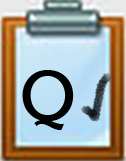Q2. Collaborating With Other Cultures: Japan
The importance of non-verbal communication.
Step 1. Copy or download this 20.Q2 Collaborating with Other Cultures Notes Document.
Step 2. How much do you know about working with other cultures?
- Find out by taking this quiz, “Working Globally Across Cultures.” You will share your thoughts about the quiz in a way your teacher directs, such as a group discussion or in a Padlet created by your teacher..
Step 3. Review the non-verbal communication rules for doing business in Japan by using the slide show embedded below or going into this document Non-verbal communication rules for doing business in Japan.
Step 4. With a partner, brainstorm three-five behaviors you would avoid in a Japanese business meeting based on the slide deck above. If you would like additional resources to review, check out, Japanese Communication Style: It’s More Than Knowing the Language. Add your behaviors to your notes document and be prepared to share based on directions from your teacher.
Step 5. Now take some time to think about and record in your notes document the differences between American business communication practices and Japanese business practices. You will need to read through the article (American Culture Communication) to gain some insight into the American practices. Check out both the verbal and non-verbal communication sections.
- Compare this to the suggestions for doing business in America.
- How would you describe Japanese business culture?
- How would you describe American business culture?
- How are they alike and different?
- Either individually or with a partner, create a digital artifact to explore these cultural differences. You can do this on your Quest 2 Notes Template, on paper, Padlet, or using an online Venn diagram creator such as the one in classtools.net/Venn/ Be sure to take a screenshot or share the web link if you use an online tool.
- What conclusions can you make about communicating and doing business globally?
Competencies & Standards
MITECS Michigan Integrated Technology Competencies for Students, and
1. Empowered Learner
a. Articulate and set personal learning goals, develop strategies leveraging technology to achieve them and reflect on the learning process itself to improve learning outcomes
2. Digital Citizen
a. Cultivate and manage their digital identity and reputation and are aware of the permanence of their actions in the digital world
b. Engage in positive, safe, legal and ethical behavior when using technology, including social interactions online or when using networked devices
c. Demonstrate an understanding of and respect for the rights and obligations of using and sharing intellectual property
3. Knowledge Constructor
d. Curate information from digital resources using a variety of tools and methods to create collections of artifacts that demonstrate meaningful connections or conclusions
6. Creative Communicator
b. Create original works or responsibly repurpose or remix digital resources into new creations
c. Communicate complex ideas clearly and effectively by creating or using a variety of digital objects such as visualizations, models or simulations
d. Publish or present content that customizes the message and medium for their intended audiences
7. Global Collaborator
c. Contribute constructively to project teams, assuming various roles and responsibilities to work effectively toward a common goal
d. Explore local and global issues and use collaborative technologies to work with others to investigate solutions
Websites and Documents
Websites
- Class Tools/Venn
- Comparing Management Cultures
- Creately
- Global Collaboration Survey
- Guide to Business Cultures
- Job Success - Listening Skills
- Non-verbal communication rules for doing business in Japan
- Padlet
- The Power of Body Language
- Word Clouds
- Working Globally Across Cultures Survey
21t4s Documents & Quizzes




